How Slack Grew To 8 Million Subscribers In 5 Years
As of 2018, Slack has grown to 8 million subscribers in just five years.
Despite its huge success, this collaboration tool for teams has humble beginnings. In fact, it was a by-product called Tiny Speck that Stewart Butterfield’s team had built when they were working to develop an online game. The game didn’t fly; Slack is the Phoenix that rose from its ashes.

Slack’s 2019 rebranded logo
This article gives you insight into how Slack managed to become an 8 million subscriber app in such a short timeframe.
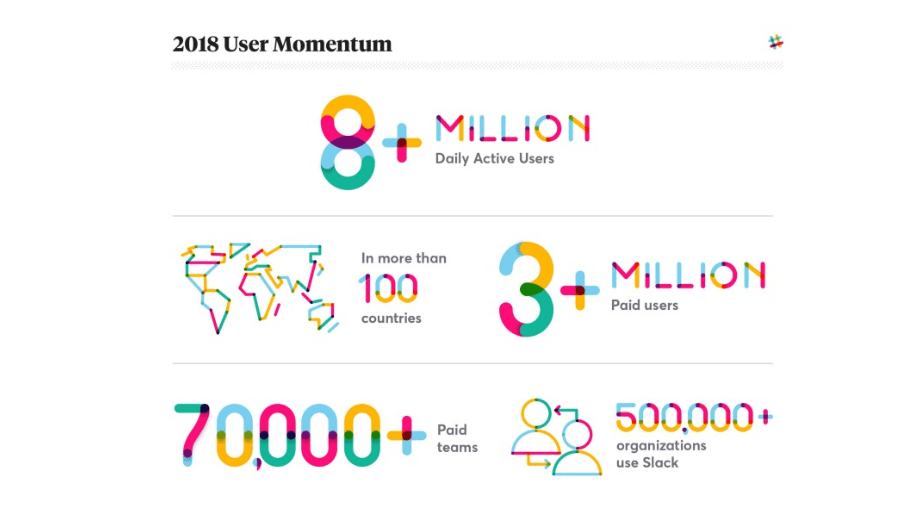
slackhq.com
Slack is an enterprise messaging tool which is aimed at assisting team members to chat, work on projects together, and share links and more in real time.
Read our previous Growth Stories: Spotify, Canva.
Slack was developed using the following 6 growth strategies:
1. Word-of-mouth marketing
Stewart Butterfield (CEO and co-founder) and his team began working on Slack in 2012.
Before their preview release in August 2013, Stewart and his team had begun asking friends and acquaintances working at other companies to give Slack a go and see what they make of it.
This helped the team discover how the product fitted the market and catered to customers’ needs. It also helped them work on core features and basic functionality.
The word-of-mouth approach worked brilliantly because on the release day 8,000 people signed-up to Slack. Two weeks later, that number had grown to 15,000. By February 2015, when the tool was publicly available, Slack had acquired 500,000 daily active users. Within four months, this number had doubled to 1.1 million active users.
Today Slack has 8 million daily active users with 3 million paid users and counting. If you are an SEO enthusiast, here is another benefit which will make you feel warm inside: 100.000.000 organic traffic/month of which 90% is driven by word-of-mouth.
Our mission at Slack is simple: to make people’s working lives simpler, more pleasant, and more productive. The experience our users have working in Slack is core to our culture and to our business success.
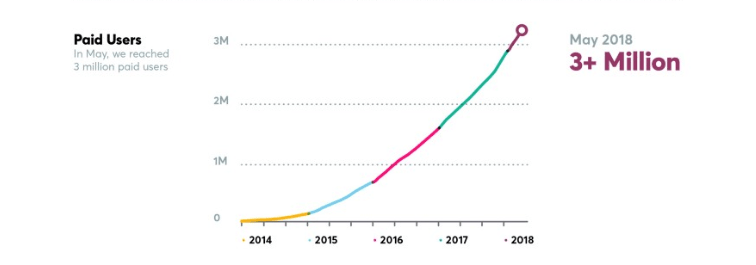
slackhq.com
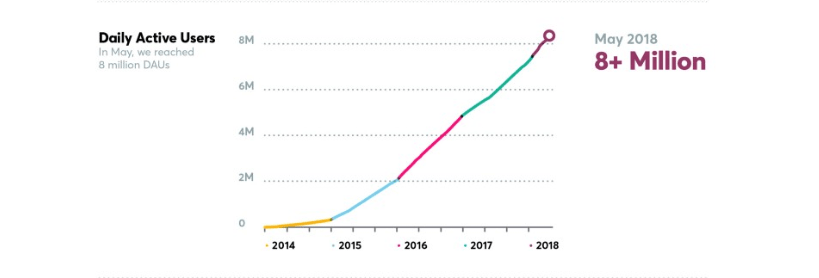
slackhq.com
2. Integration with other providers
We’re selling a reduction in information overload, relief from stress, and a new ability to extract the enormous value of hitherto useless corporate archives. We’re selling better organizations, better teams. That’s a good thing for people to buy and it is a much better thing for us to sell in the long run. We will be successful to the extent that we create better teams.
Stewart Butterfield, CEO and founder
Slack is not just a messaging app, it’s a collaboration hub that brings the right people together with the right conversations, information, and tools they use at work. And to be productive and efficient, teams need to make the most of their time. So integrating with other tools that teams use on a regular basis was paramount to Slack’s success.
There are more than 1500 apps in the Slack App Directory. Slack’s website attracts 100.000.000 visitors/month.
Chris von Wilpert has analyzed how the integrations are contributing to Slack’s website organic traffic. Here are his conclusions:
- Slack ranks on the first-page search results whenever anyone searches a product with which Slack integrates;
- Slack managed to achieve this by creating an individual landing page for each of its integrations;
- The integrations bring in high-quality referral traffic.
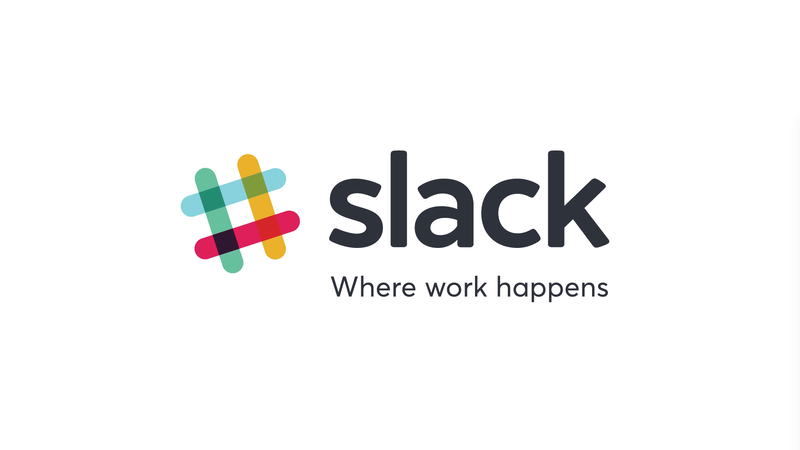
3. Content marketing
Content marketing didn’t become part of Slack’s growth strategy until 2014.
Unlike other companies, the team growing Slack made an interesting and bold choice: to host their company blog outside slack.com.
Slack’s blog is called SlackHQ.com and it was first a publication on Medium.com, the online blogging platform. It was bold and risky at the same time, and it worked out great for Slack. The content published here took full advantage of Medium’s features and was often featured on Medium’s homepage in the ‘Popular On Medium’ section.
The blog managed to acquire over 125.000 followers, but in 2018 it was moved to slack.com.
4. Twitter
We bet heavily on Twitter. Even if someone is incredibly enthusiastic about a product, literal word-of-mouth will only get to a handful of people – but if someone tweets about us, it can be seen by hundreds, even thousands.
Stewart Butterfield, CEO and founder
Twitter is Slack’s most important social media platform.
Here is how Slack used the 180-character (now 240) social media network:
- Build brand awareness;
- Define its tone of voice;
- Keep their users up-to-date on changes, improvements, company life;
- Get customer feedback;
- Communicate with customers;
- Prevent the Slack support team from scaling up massively: Slack’s customer support team is made up of just 18 people, with a group of 6 manning Twitter 24/7.
Slack’s Twitter account has 374K followers, but it is most known for being home for the Slack Wall of Love where Slack subscribers come to express their love under @SlackLoveTweets.
Read Stewart Butterfield’s success story.
5. Dear Microsoft
On November 2016, Microsoft announced it was launching their own competing product.
Slack took this opportunity to gain media attention by publishing a letter addressed to Microsoft as a full-page ad in the New York Times.
Here is the letter’s first paragraph:
Dear Microsoft,
Wow. Big news! Congratulations on today’s announcements. We’re genuinely excited to have some competition.
We realized a few years ago that the value of switching to Slack was so obvious and the advantages so overwhelming that every business would be using Slack, or “something just like it,” within the decade. It’s validating to see you’ve come around to the same way of thinking. And even though — being honest here — it’s a little scary, we know it will bring a better future forward faster.
While the letter sets out to give Microsoft “some friendly advice”, it does so by highlighting the principles and values which Slack was built upon and taking a few jabs at Microsoft at the same time:
- It’s not about features, it’s about “a degree of thoughtfulness and craftsmanship that is not common in the development of enterprise software”;
- Thousands of hours talking to customers;
- Internal transparency and a sense of shared purpose;
- The necessity of working with an open platform and integrations: “We know that playing nice with others isn’t exactly your MO, but if you can’t offer people an open platform that brings everything together into one place and makes their lives dramatically simpler, it’s just not going to work.”
- And ultimately love: “We love our work, and when we say our mission is to make people’s working lives simpler, more pleasant, and more productive, we’re not simply mouthing the words.”
Here’s the final paragraph:
So welcome, Microsoft, to the revolution. We’re glad you’re going to be helping us define this new product category. We admire many of your achievements and know you’ll be a worthy competitor. We’re sure you’re going to come up with a couple of new ideas on your own too. And we’ll be right there, ready.
— Your friends at Slack
6. Fair Billing Policy
Like many other service apps and tools, Slack uses the freemium business model: free, standard and plus subscriptions.
Out of the thousands of hours of talking to early adopters and customers, the team behind Slack found one particular paint point and came up with a solution.
What is preventing the customer on free subscription from upgrading to a paid one?
One reason is that companies are charged for a number of seats regardless of how many employees are actively using the software. A second reason is that sometimes employees become inactive so the company loses money because it paid in advance.
To this problem, Slack found the following solution: Fair Billing Policy.
Here it is:
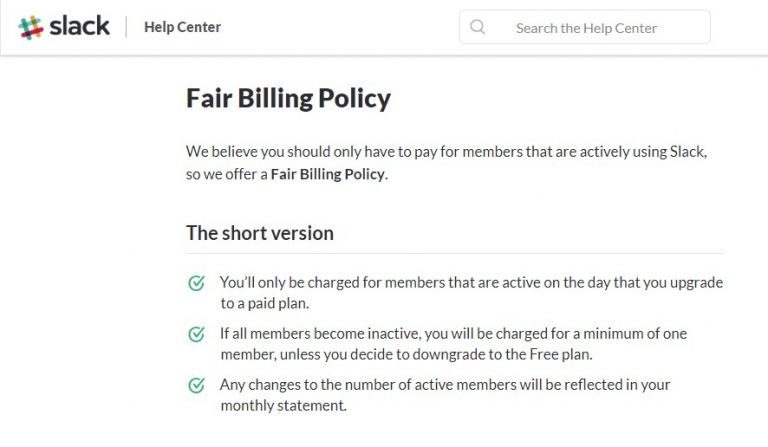
Big companies like Airbnb, IBM, Oracle, Target, BBC, Workday and E-Trade count among Slack’s customers with approximately 70,000 businesses paying for the company’s services.
According to finance experts, Slack is currently valued at $8.3B and it doesn’t look like it is slowing down.
Join the Conversation
We’d love to hear what you have to say.
Get in touch with us on Facebook Group and Twitter.
This Tool Helps you Create Content your Audience Will Love
Just as you cannot drive your car blindfolded, you cannot design your marketing strategy without thorough knowledge of your audience. How can you write content if you don’t know whom you’re writing for? The more details you know about your audience, the better you can craft your content and the more efficient your content strategy will be.
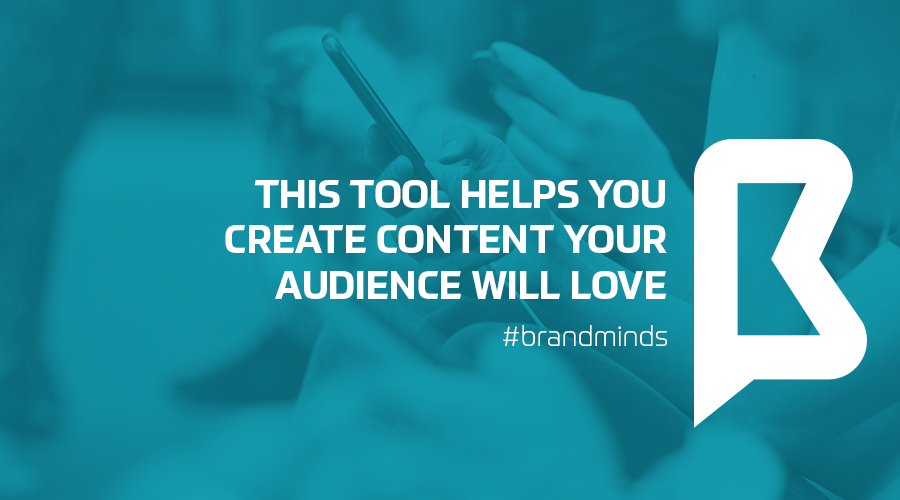
Are you a marketer or brand manager looking to update your audience profile?
Do you seek ways to increase engagement on your content?
This tool can help you.
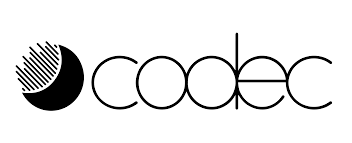
We started Codec to empower marketers and creatives with the empirical evidence they need to make better decisions and we are proud to have worked with some of the best in the business since founding Codec in early 2015.
Codec team
Codec is a product developed by a team of marketers, technologists and data scientists whose purpose is “helping creatives and brands make great content with confidence”.
What is Codec?
Codec is an AI powered cultural segmentation platform and consumer insight tool that allows brands to discover, interrogate and activate new audiences.
Here is how marketers can benefit from using Codec:
- Identify and understand existing target audiences and personas;
- Derisk creative and strategic decisions;
- Increase content performance.
How does CODEC work?
CODEC works as a process, by going through three stages:
1. Select your audience – you can choose from your existing personas/communities, your existing social handles or you can choose from over 1500 Codec pre-built audiences;
2. The platform proceeds with gathering the data and extracting the insights using sophisticated AI and machine learning, from natural language processing to neural nets;
3. Use the insights to inform creative decisions in any stage of the content creation process, be it research, strategy, creative, or distribution.
What kind of insights does Codec provide marketers with?
Psychographics are stronger than demographics
Demographics are no longer enough to get a complete profile of your target audience. Your audience is defined beyond standard criteria such as age, location, sex etc.; behaviours are shaped and triggered by how strongly your audience feels and resonates with a certain subject or interest.
Codec helps marketers discover these interests by providing them with psychographics so they can understand their audience in a deeper and more relevant way.
Here are 8 key insights and data that Codec provides:
1. Passion Point & Interest Analysis
This module analyses the level of engagement that the audience has with any particular interest. Codec tracks over 1,500 cultural interests across multiple European, South American, North American and Asian countries and territories to understand the interests that truly resonate with a target audience. The platform monitors in real time billions of content interactions from millions of users across social media, categorised into our 1500 interests. Marketers receive detailed analysis of their target audience’s passion points from their interactions with 3rd party content.
Benefit: Marketers are provided with actionable & shareable content strategy and enhanced content briefs.
2. Interests over time
As we grow older, our passions change: we lose interest in some of them and we discover other interests or beliefs that we feel strongly about.
Codec’s AI understands the 3rd party content that your audience interacts with and can track how the audience’s interests are changing over time.
Benefit: With the help of this tool, marketers can catch a rising trend or create evergreen content based on stable interests confirmed over time.
3. Personality analysis
Codec goes even further than identifying interests; it understands the core values and personality traits within a tribe or audience. It outlines core personality types by mapping their written text and content preferences.
Benefit: marketers can ensure the content includes the right tone, which dramatically increases shareability, affinity and purchase intent.
4. Optimal platform and format
There are so many formats you can deliver your content in: text, photographs, videos, infographics, epapers, podcasts etc. Which of these formats does your audience prefer and engage with? It can take a lot of time to pinpoint your audience’s preferred content format. Once you established the right format for your content, which platforms do you use to deliver it?
Codec provides marketers with knowledge of the formats and platforms that resonate with their audience so they don’t have to A/B test.
Benefit: This tool helps marketers make precise tactical content decisions to maximise the effectiveness of content through smart distribution.
5. Visual imagery analysis
A picture is worth a thousand words, but the right picture is worth an increase in brand awareness through engagement. Through deep learning and neural nets over millions of types of image, Codec sees the visual imagery and elements that most engage your target audience.
Benefit: Marketers can understand what genres of image content works best. Identify the framing, colour, tones and topics that are in-demand from their target audience.
6. Trending content
Delivering the content your audience is looking for at the moment they need it is a recipe for success. Google calls these moments micro-moments.
Codec identifies the recent, real-time content that is trending among your target audiences.
Benefit: Marketers can pinpoint the specific content that their target audience is spending time consuming.
7. Media planning reports
Nobody likes talking in an empty room and this tool helps you avoid it. Codec tracks exactly where your target audiences spend time online so you can target them effectively, increasing ROI.
Benefit: Marketers can customise entities they do or do not want to target against in order to protect their brand and increase effectiveness of targeting.
7. Influencers
Influencer marketing can drive engagement and increase brand awareness when done correctly. The success of an influencer marketing campaign lies mostly on choosing the right influencer.
Codec picks the most relevant and resonant influencers to use for creation and distribution.
Benefit: Marketers can identify the optimal influencers, YouTubers, bloggers, celebrities and brands that have an impact on their target audiences, and pinpoint what topics influencers would most effectively explore with their communities.
Eve, an UK on-demand mattress company doubled its sales using content developed with Codec insights:
Wrapping up
Here are the benefits of using Codec to help you create the right content for your audience:
- Better understanding of your audience by discovering the interests that truly resonate with it;
- Identifying topic pillars for the content you will create;
- Understanding the motivators for your target audience’s interests;
- Discovering evergreen content;
- No more A/B testing;
- Finding what content format and which platform to distribute it on for maximum impact with your audience;
- Which content your audience loves to engage with;
- Identifying the influencers that have the most resonance with your target audience;
- Making strategic decisions with confidence;
- Validating your choices and strategy plans.
How To Measure Content Marketing To Reach Your Goals

33% of B2B marketers and 41% of B2C marketers cited the inability to measure as a significant challenge. This alarming data comes from a research conducted by the Content Marketing Institute.
To make sure that your content marketing is having the impact that you want it, you must have the right content marketing strategy. Like in anything in marcomm in general, there is no magic formula to identify the key performance indicators (KPI) you need to measure, as content marketing goals are highly individualized. Your marketing priorities are strongly influenced by the size of your business, budget, available resources, previous tests and outcomes, etc. To get the most out of your content marketing strategy, determine your specific goals and tie them to the right KPIs.
First of all you must start by understand the importance of real content and how it has to be true and relevant for your brand. And at the same time what do you want it to solve and achieve. Depending on the goal you are choosing you will need a certain type of content marketing strategy focusing on specific audiences, leveraging different marketing channels, and communicating targeted messages.
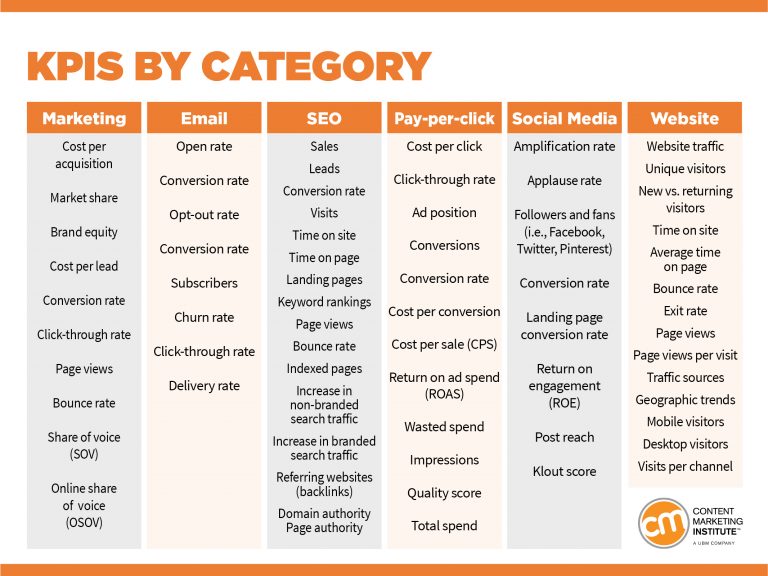
Secondly, you must look for inspiration, find the right themes and start producing the necessary content. From time to time take a better and more insightful look at your data and consumers and see how and if the content you are providing is working or not, as it might need for re-adjusting along the way.
The greatest potential for content marketing success lies in viewing content as a strategic business activity that just happens to be performed by marketers, rather than as a marketing and advertising tactic that gets applied for the express purpose of reproducing incremental wins or amplifying upper-funnel marketing results. Content marketing isn’t a replacement for other forms of marketing – it just makes those forms work better. Content marketing adds value to the business by building a critical strategic asset: a subscribed audience.- CMI
In order to reach your goals through content marketing you will need to cover five core elements: purpose and goals; audience; story; process and measurement.
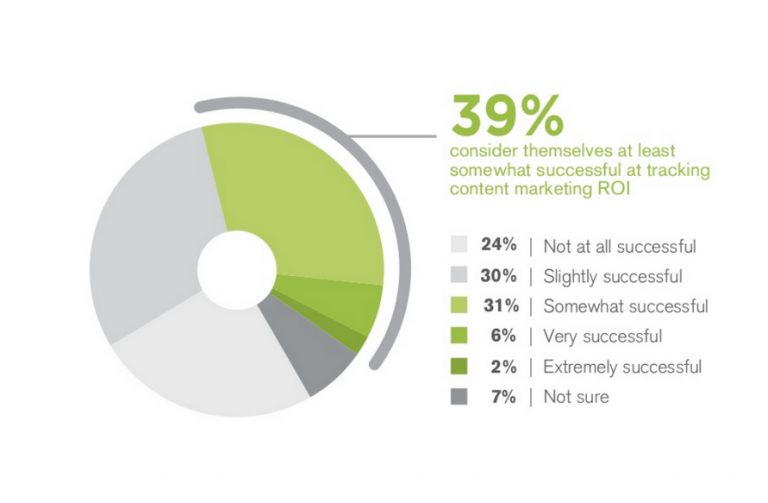
source: Marketing Insider Group
As most content marketers aren’t getting their marketing metrics right, despite all the marketing technology available today, these is your chance to stand out. Less than half of B2B marketers – about 46 percent – are satisfied that their marketing metrics are aligned with their content marketing goals. More often than not, marketers are simply not tracking the right metrics.
With a clear idea of your current content marketing goals, you’ll know which metrics matter the most right now. For example, consumption and lead metrics will take a front row seat on your analytics platforms when your primary goal is to attract new customers. You’ll still use KPIs from different categories as you’ll need to understand how effective your content is at each stage of the buyer journey, but it is the priority metrics that show you if you are reaching your main goals.
Consumption metrics have to do with the number of people consuming your content, as well as the frequency and depth of their consumption and what channels they are using to reach your content. These metrics are going to take a front row seat in your content marketing reporting if your priority goals are building brand awareness, lead generation and lead nurturing.
Sharing and engagement metrics are essential to fostering a relationship with and sense of loyalty from your audience; according to Chartbeat, “visitors who read an article for 3 minutes return twice as often as those who read for one minute”. This is the place where you will see if the audience is into your content and if they find it interesting enough to want to share it with their friends. It’s the right time also to check your brand’s likability,by asking the audience to answer some questions.
Retention marketing metrics
“As the cost of acquiring a new customer is seven times that of retaining an old one, and your current customers will spend 31 percent more on average than new ones, this is one area of content marketing analytics you don’t want to overlook. Even when you’re goal-focused on lead generation, sales or other common priorities, don’t take your eye off of your current customers or you could be losing ground where it matters most, even when you are generating a lot of interest and action from new prospects,” wrote Marketing Insider Group.
The conversion rate is the measure of whether people take the action you want them to take with your content – it could be a simple share on a social media platform or a form submission to download an ebook. It is good to keep a track of the conversion rate to know whether or not your content is converting into valuable information that you can use (email address, sales lead etc.) A good conversion rate varies depending on the industry you are in and the channels you are targeting. According to Teknicks, for inbound marketing campaigns, 1-3% is a good average.
Lead marketing metrics
According to the Content Marketing Institute, sales, lead generation and lead nurturing are among the top organisational goals for content marketers. To effectively track this metric, you need to look at the number of leads generated from form submissions, trial signups, offer opt-ins, and email subscriptions. However, to get the real business picture, you should focus on the number of qualified leads generated by a piece of content.
A CRM can easily help you track and attribute leads to your content marketing campaigns. You can also track the source of leads right from the moment the enter the sales funnel till the point they become a customer. This will help you monitor the content they consume on the way and the content that converts the most. Some popular CRMs you can use are – Hubspot, Zoho, and Capterra. – ducttapemarketing.com
These metrics look at how content impacts the bottom of your sales funnel. When your number one content marketing goal is to drive sales, these are the numbers that will be the most important.
- Total dollar amount of pipeline opportunities and the amount of revenue influenced by one or more pieces of content
- Using a first-touch attribution model, you can aggregate the total dollar amount of sales generated through a piece of content
- Revenue generated
More details about this long and complicated process you can also find here and here.
And if you like our articles,don’t be shy and comment below and share them.
Top marketing trends for 2018-part I
Content marketing will bring the biggest commercial impact for the brand
After years and years of talking and writing about the power of storytelling and its huge impact on the brands and businesses, it looks like business people and marketing representatives are starting to put bigger emphasize on it and see its full potential. On a study conducted by Smart Insights, content marketing is the most important trend (20 % of the respondents recognizing it), content marketing being seen as the ‘engagement’ fuel that powers all digital communications from search to social to email marketing to creating website experiences which convert.
Businesses are getting serious about treating content as a strategic resource, that means developing a customer engagement strategy using different media as shown in the lifecycle diagrams above, and at a practical level, developing content for different audiences using techniques like Personas and Content mapping.
Personalization takes the extra mile
“A key tenet of account-based marketing (ABM) is providing content tailored to specific accounts or account types. As ABM principles go mainstream, look for content personalization to proliferate. Platforms provided by Adobe and Optimizely make it possible for marketers to recommend specific pieces of content similar to the way Netflix suggests shows,” wrote entrepreneur.com.
Moreover, according to AdWeek, personalization also takes other forms on mobile and through AI. According to Robert Garf, vice president of industry strategy and insights at Salesforce Commerce Cloud, a technology like AI can help guide a consumer to better product recommendations or remind a consumer of their size for an item. “Over on mobile, personalization will manifest itself in the checkout process, the navigation to show you the right products or reminding you of past purchases and the sizes you used to buy for those items, adds AdWeek.
In e-commerce most of all, creating unique customer experiences will be an important part of the industry, and product suggestions based on past purchase history, geographic location and personal information will be key to success.
“If you aren’t in the business of saving your customers their precious time, making their lives easier and better, you risk being disrupted by a newbie who will. Personalization is the best marketing investment you could make. People want experiences that are actually relevant for them. Customers today demand the hyper-personalization of everything. Personalization is what happens when the company leverages a deep understanding of customer preference, structured and unstructured customer data, conversations in and across all channels; when companies can preemptively anticipate a customer’s needs,” wrote Forbes.
Integration. Integration. Integration
You might say, what is new about that? Experts have been talking all the time about integration in the last years. But integration is about so many factors: integrating machine learning into marketing automation, integrating social messaging apps into communications, integrating video into the customer journey, integrating content marketing into the customer journey using a customer engagement strategy, integrating search marketing into your content marketing activities, integrating marketing technology, etc.
One can read more here.